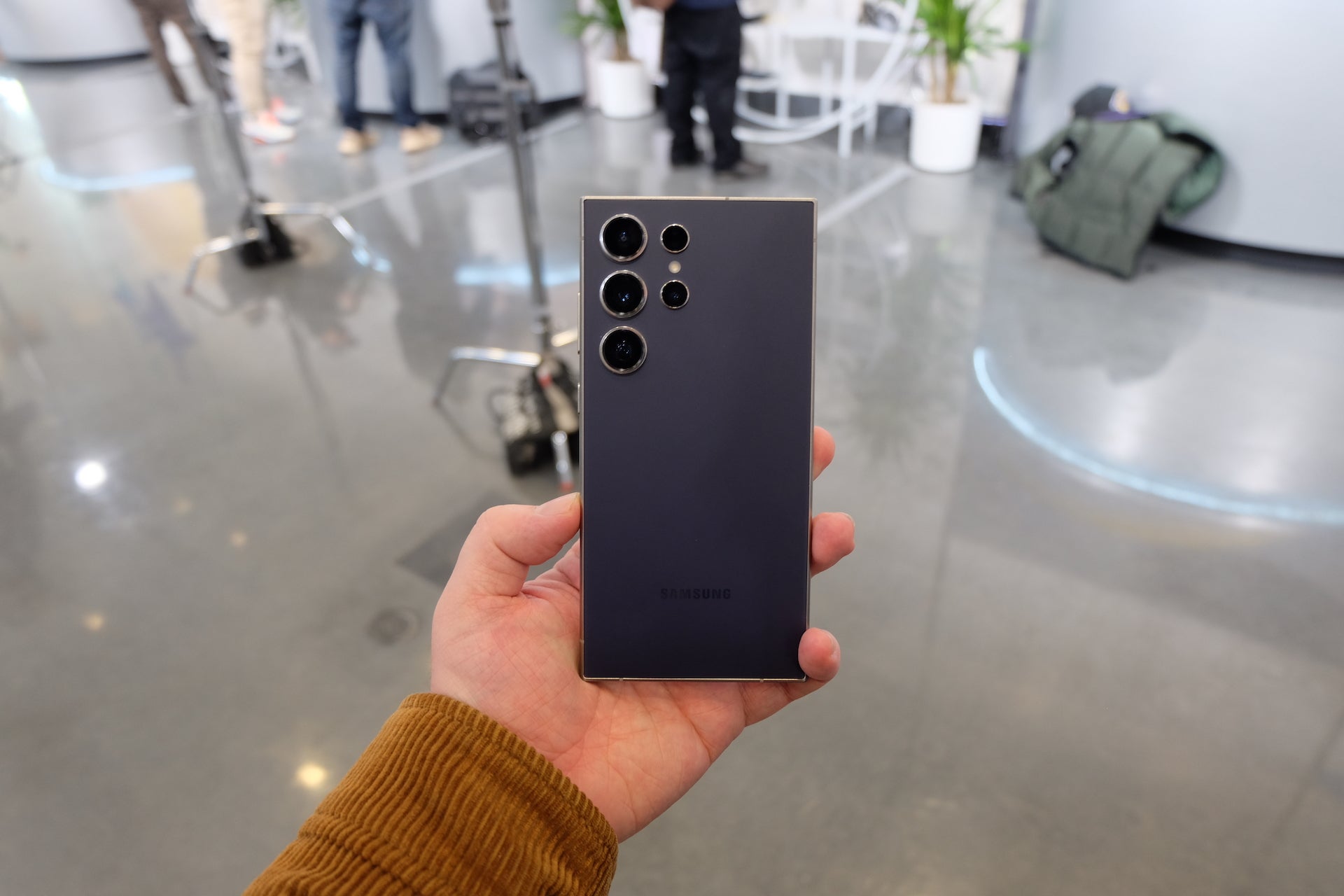
Best Android Phone for Most People
Samsung Galaxy S24
The Samsung Galaxy S24 impresses with its remarkable battery life, making it an excellent choice for those always on the go. While it may not have the most advanced camera system or the latest AI features, its larger battery ensures a full day of use on a single charge.
The Galaxy S24 excels right out of the box, reflecting three years of refinements seen in its predecessors, the S22 and S23. Although the camera hardware remains similar to the 2022 models, the exceptional battery life overshadows this aspect.
Google Pixel 8
For those prioritizing software updates and AI features, the Google Pixel 8 is an excellent choice. This phone offers great software, amazing AI features, and a sleek design. One standout feature is the guarantee of at least seven years of security updates, ensuring long-term security.
Equipped with the Tensor G3 processor and Android 14 software, the Pixel 8 includes AI tools like the generative image wallpaper creator. While it lacks the 5x optical zoom camera seen on its bigger brother, the Pixel 8's rear cameras are still highly regarded by professional photographers. The higher price of $699 seems worth it, especially when compared to the affordability of the Pixel 6 and 7 models.
Best Premium Android Phone
Samsung Galaxy S24 Ultra
The Samsung Galaxy S24 Ultra stands out with its blend of hardware and software. Featuring a 6.8-inch Dynamic AMOLED 2X display with a 1440 x 3120 pixel resolution and a 120Hz refresh rate, it is perfect for gaming and multimedia consumption.
Powered by the Qualcomm Snapdragon 8 Gen 3 processor and 12GB of RAM, its camera system is among the best in the market. The phone includes a 200MP main camera, a 50MP ultrawide camera, a 12MP telephoto camera with 3x optical zoom, a 10MP telephoto camera with 10x optical zoom, and a 12MP front-facing camera. The 5000mAh battery supports fast charging, ensuring impressive battery life.
The Galaxy S24 Ultra is currently one of the best phones available, second only to the Honor Magic 6 Pro. Some argue that the Galaxy phone is better due to its stylus and flat display, but both options are sure to impress.
Best Camera Android Phone
Samsung Galaxy S24 Ultra
Topping camera ratings, the Samsung Galaxy S24 Ultra combines hardware and software, leveraging AI for exceptional image quality. The phone features a 200MP main camera, a 50MP ultrawide camera, a 12MP telephoto camera with 3x optical zoom, a 10MP telephoto camera with 10x optical zoom, and a 12MP front-facing camera.
This combination of cameras and advanced AI software makes it an excellent choice for photographers. Whether capturing group selfies or slow-motion videos, the Galaxy S24 Ultra's camera system is reliable and flexible.
Best Value for Money
Google Pixel 8a
For those on a budget, the Google Pixel 8a offers excellent value. Launching at a great price of $499 / £499 / AU$849, it provides seven years of Android updates, making it a long-term investment. Featuring the same Gemini AI as the Pixel 8 Pro, it has a sleek design that is hard to resist.
While it may not have the same camera capabilities as the Pixel 8, the Pixel 8a is still a powerful device that gets the job done. It's also a popular discount item when Amazon puts smartphones on sale, making it an even better value for money.
Best Foldable Phone
OnePlus Open
The OnePlus Open stands out with its unique foldable design. Featuring a 6.3-inch outer display and a 7.8-inch inner display, it is perfect for both everyday use and multimedia consumption.
Powered by the Qualcomm Snapdragon 8 Gen 2 processor and 512GB of storage, its rear camera system includes a 48MP main camera, a 48MP ultrawide camera, and a 64MP telephoto camera. The front camera system includes a 32MP camera on the outer display and a 20MP camera on the inner display.
The OnePlus Open is an excellent choice for those wanting a premium foldable experience without breaking the bank.
Best Battery Life
OnePlus 12R
The OnePlus 12R is a budget-friendly phone that excels in battery life. Featuring a super fast processor, great cameras, and an impressive battery that lasts all day, it stands out in this category.
The phone's battery life makes it an excellent choice for those always on the move. It also supports fast charging, ensuring quick top-ups when needed.
Factors to Consider When Choosing an Android Phone
Display
A good display should cover a wide color gamut, be durable, and have a high refresh rate for smooth visuals. It's what you interact with daily, making it an essential feature.
Performance
Most Android devices are powered by Qualcomm's Snapdragon chipsets, capable of running daily and weekly onslaughts of apps and services. The best Android phones handle tasks efficiently.
Camera Quality
From group selfies to slow-motion videos, the best Android phones feature reliable and flexible camera systems. Ample storage size ensures enough space for all photos and videos.
Battery Life
Top picks on this list last from morning to night and support fast charging. This ensures you can use your phone without worrying about running out of battery.
Price
Each phone on this list offers great value for its price, making it an investment that will last for years. No device here overcharges for the hardware-software package provided.
